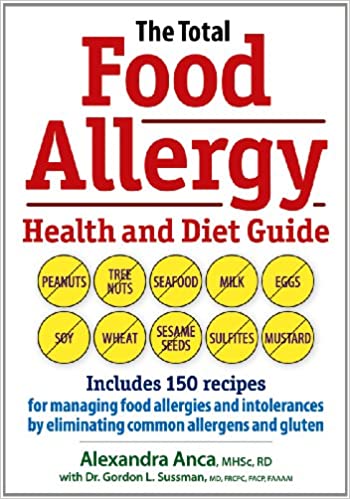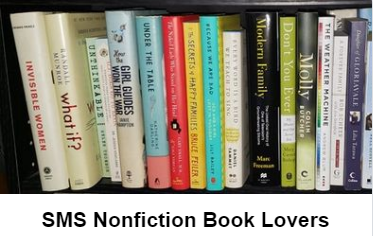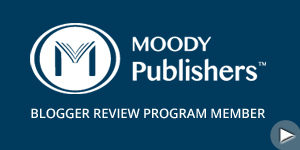A book review of The Total Food Allergy Health and Diet Guide: includes 150 recipes for managing food allergies and intolerances by eliminating common allergens and gluten by Alexandra Anca, MHSc, RD

Stars: ****
Robert Rose (2012)
Diet/Allergy/Cookbook
343 pages
Disclosure: I received a copy of this book in exchange for an honest opinion. This post contains affiliate links.
Summary: Did you know that most allergic reactions to food are triggered by these 10 common allergens: peanuts, tree nuts, seafood, milk, egg, soy, wheat, sesame seeds, sulfites, and mustard? Based on the most current and comprehensive information available, this indispensable guide is for anyone managing these allergies and intolerances, as well as those who suspect that they might have a food allergy and need to know how to find out for sure.
Discover a wealth of practical advice on living with food allergies and intolerances, and on planning an allergen-free diet with delicious and nutritionally sound recipes that exclude the allergens that adversely affect your health. Food allergies are a lifelong challenge, but by understanding what causes them and how they develop, you can avoid the threats to your wellbeing and achieve good health.
The Total Food Allergy Health and Diet Guide
We recently found out my teen daughter is allergic to milk. Milk allergies don’t usually start late in life so we think she always had it but it’s gotten worse. I love to research and learn more about health issues someone in my family is facing so I asked the publisher if we could review the book.
The book starts off with a very scientific approach, explaining what allergy means and the different between allergy and intolerance but also how the immune system works. It got too scientific at times and I skimmed a lot of this section. But if you really want to understand the nitty gritty, this part will help.
There is a smaller section after that about associated conditions. That means conditions that can be associated with food allergies like ADHD, Asthma, Autism, Hay Fever and IBS.
Following that is a section on how food allergy is diagnosed and includes information on typical tests. Part 2 starts the managing anaphylaxis section and then a big part of the book is Chapter 5.
The Top 10 Most Common Allergens
In Chapter 5, each of the top 10 most common allergens is gone over. Each section includes general information about the allergen including some common questions about what is or isn’t included or misconceptions. Then comes the “Foods to Enjoy, Question and Exclude” mini section. Foods are broken down by section of the grocery store.
For example in the Peanut allergy section under Produce it includes some of the following:
Foods to Enjoy (all fresh fruits and vegetables, freshly cut ready-to-eat-fruits, packaged salads etc.)
Foods to Question (Dried Fruit – ensure no cross contamination with peanuts, Fruit Pie Toppings)Foods to Exclude (Fruit or vegetable salads with toppings including peanut ingredients, date rolls, dried fruit and nut trail mixes.)
Excerpt from Total Food Allergy Health and Diet Guide
Another example is in the Fish, Shellfish and Crustacean Food Allergy section, under the Condiments/Oils/Vinegars/Dressings section:
Foods to Enjoy (all vegetable oils, mustard, ketchup, hot sauce etc)
Foods to Question (antipasto spreads, pizza toppings, steak sauce etc.)Foods to Exclude (fish sauce, XO sauce, Anchovy Paste etc.)
Excerpt from Total Food Allergy Health and Diet Guide
Chapter 5 takes up a lot of the book. After that is a chapter on food label regulartions and a chapter on living with food allergies and intolerances. They are short chapters though.
The final thing the book brings is Part 3 – Recipes. Included is Breakfasts, Breads and Snacks, Soups and Salads, Main Dishes, Side Dishes, Desserts and Beverages. Many of the recipes are free from all or most of the allergens. Some of them are mix and match so you can choose what you include based on your personal allergies.
While the recipes don’t include photos, they do include tips and nutrition information which is helpful.
We are eager to try one of the lentil or quinoa recipes because we’d like to incorporate that into our diet more but we don’t know what to do with it.
Buy The Total Food Allergy Health and Diet Guide at Amazon.com and help support the blog.
Find The Total Food Allergy Health and Diet Guide at GoodReads.








